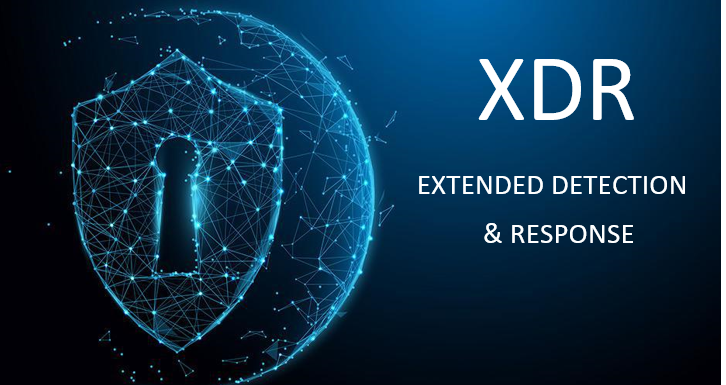In today’s digital battlefield, cybersecurity teams are overwhelmed—not by the lack of tools or data, but by the sheer volume of alerts generated across their security infrastructure. Every suspicious login attempt, file change, or network anomaly can trigger an alert. While this flood of notifications is meant to keep organizations secure, it often leads to alert fatigue—a dangerous state where real threats can be missed simply because security analysts are too inundated to respond effectively.
Extended Detection and Response (XDR) platforms are designed to combat this challenge. By using smart prioritization and intelligent correlation, XDR reduces noise, enhances threat visibility, and empowers teams to focus on what truly matters. Let’s explore how XDR reduces alert fatigue and reshapes modern security operations.
Understanding Alert Fatigue
Alert fatigue occurs when security teams are overwhelmed by a high volume of alerts—many of which turn out to be false positives or low-priority events. The result?
-
Delayed response to genuine threats
-
Burnout among SOC analysts
-
Increased risk of breaches
According to a 2024 ESG report, more than 60% of organizations receive over 500 security alerts per day, and nearly a third admit that a significant portion of alerts are ignored altogether due to resource constraints.
This problem has only worsened as organizations add more tools—EDR, NDR, SIEM, firewalls, CASBs—all of which generate their own alert streams without context or correlation.
XDR: A Game-Changer for Security Operations
Extended Detection and Response (XDR) consolidates data across endpoints, networks, cloud workloads, and identities. But its true strength lies in its ability to correlate and prioritize alerts intelligently.
Unlike siloed tools, XDR ingests telemetry from multiple sources and applies advanced analytics, machine learning, and behavioral modeling to:
-
Reduce redundant alerts
-
Group related activities into single incidents
-
Assign severity based on context, not just event type
This smart prioritization is the antidote to alert fatigue.
How XDR Achieves Smart Prioritization
1. Contextual Correlation Across Multiple Vectors
Traditional tools may trigger separate alerts for endpoint malware, lateral movement, and data exfiltration. XDR stitches these signals into a single incident, showing the full kill chain in one view.
By correlating telemetry from EDR, NDR, IAM, and cloud systems, XDR provides context that helps analysts understand scope and impact instantly, instead of chasing down logs from different consoles.
2. Machine Learning for Noise Reduction
Modern XDR solutions use machine learning models trained on historical attack patterns and organizational behavior to filter out benign events and highlight anomalies worth investigating.
These models continuously learn, adjusting baselines and scoring alerts based on evolving threat intelligence. That means fewer false positives, and more time focused on real risks.
3. Risk-Based Alert Scoring
Not all alerts are created equal. XDR platforms prioritize threats based on:
-
Asset criticality (e.g., a domain controller vs. a guest workstation)
-
User behavior (e.g., anomalous actions by a privileged user)
-
Threat intelligence (e.g., known IOCs or TTPs from APT groups)
This allows teams to focus first on alerts that represent the highest potential damage, rather than chasing every ping.
4. Automated Incident Grouping and Response
Instead of handling 50 separate alerts for a ransomware attack, XDR can group them into a single incident timeline—with root cause analysis, MITRE ATT&CK mapping, and recommended remediation actions.
Automated playbooks can also trigger responses (e.g., isolate host, disable user account) for high-confidence threats, reducing the burden on SOC teams.
Real-World Impact: What Organizations Are Seeing
Organizations that deploy XDR report significant improvements:
-
Up to 80% reduction in alert volume, thanks to deduplication and correlation
-
Faster triage times, often cut in half due to better context
-
Improved SOC morale and retention, as teams are no longer drowning in noise
-
More proactive threat hunting, because analysts finally have the bandwidth
In industries like healthcare, finance, and critical infrastructure—where every second counts—this can be the difference between a thwarted breach and a major incident.
Best Practices for Maximizing XDR’s Smart Prioritization
To get the most out of XDR, organizations should:
-
Ensure broad telemetry coverage – Connect endpoints, networks, cloud, and identity sources to enrich context.
-
Continuously tune detection rules and models – Leverage vendor support and threat intel to adapt to evolving threats.
-
Leverage MITRE ATT&CK mapping – Use it to understand attack stages and improve incident response planning.
-
Use SOAR integration for automated response – XDR is more effective when paired with playbooks and automation.
-
Invest in analyst training – Empower your team to interpret alerts and act decisively.
Final Thoughts
Alert fatigue isn’t a sign of weak security—it’s a consequence of fragmented tools and overwhelming data. Extended Detection and Response (XDR) addresses this by turning data chaos into actionable intelligence.
Through smart prioritization, contextual correlation, and intelligent automation, XDR enables security teams to move from reactive firefighting to proactive defense. In an era where every second matters, this shift is not just helpful—it’s essential.
If your SOC is drowning in alerts, it may be time to let XDR take the wheel.







0 Comments